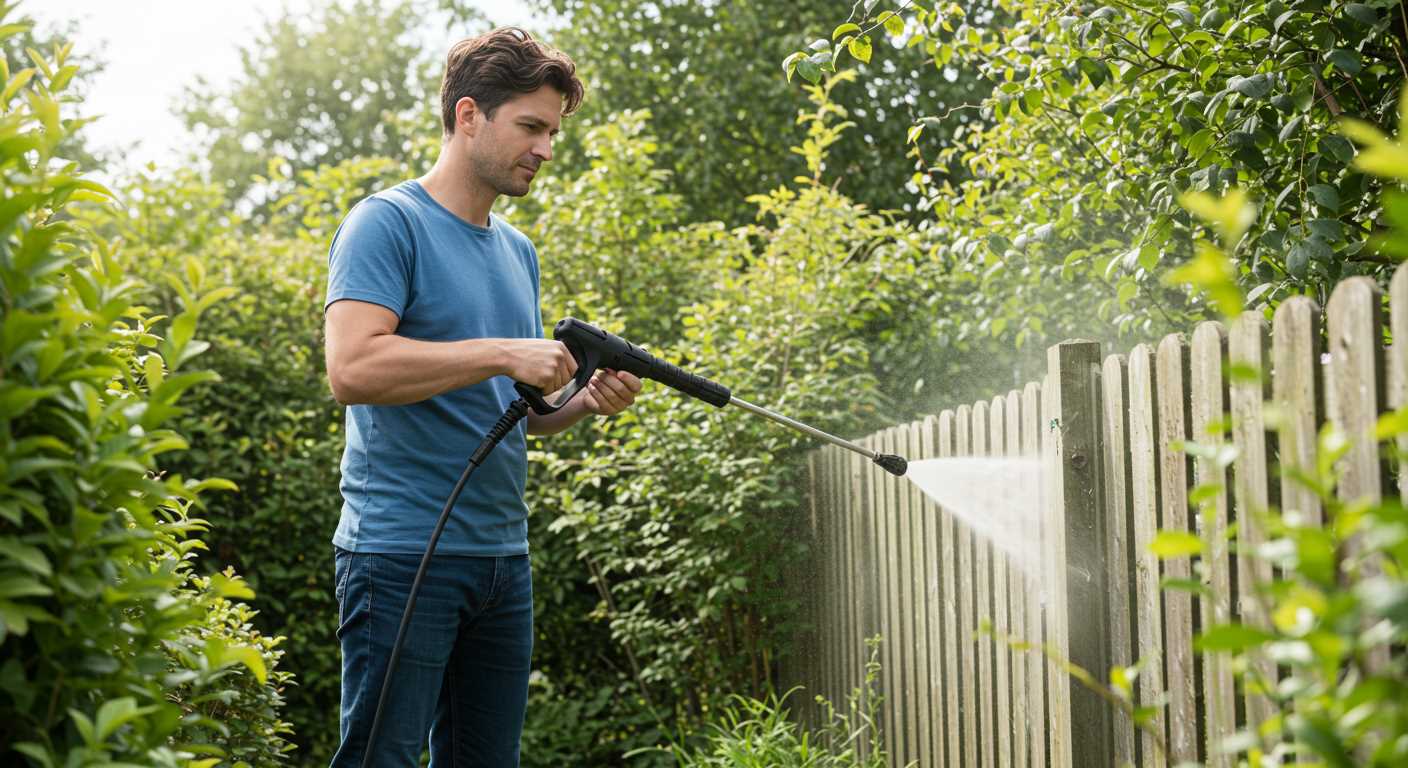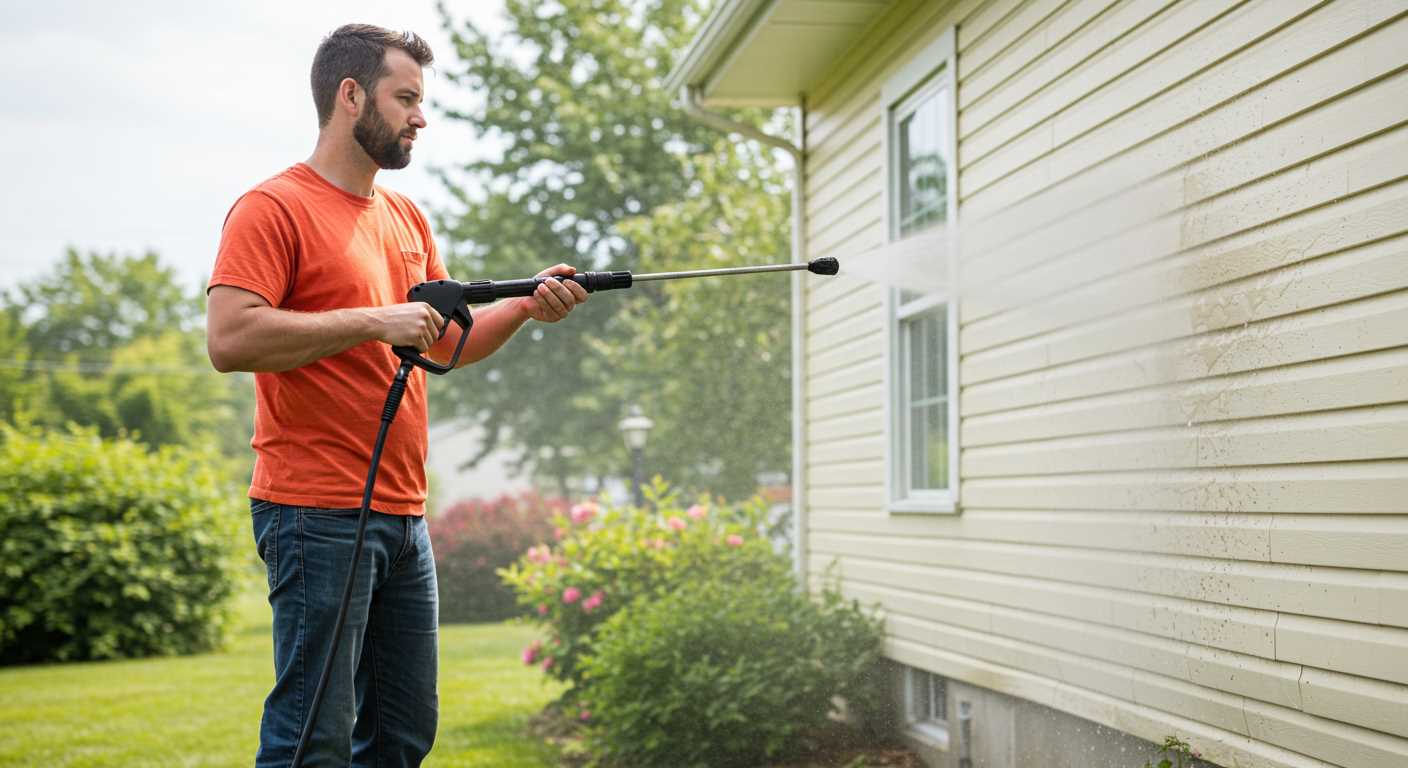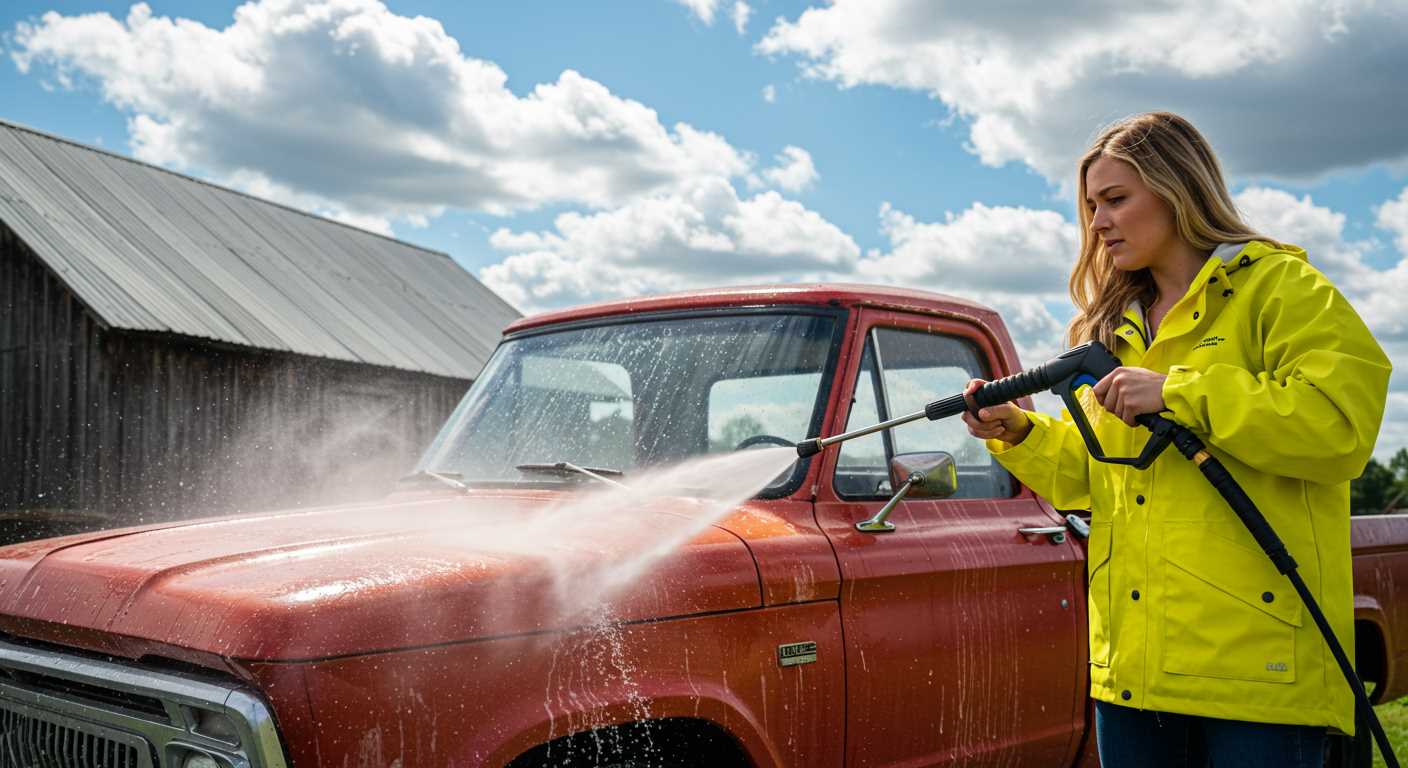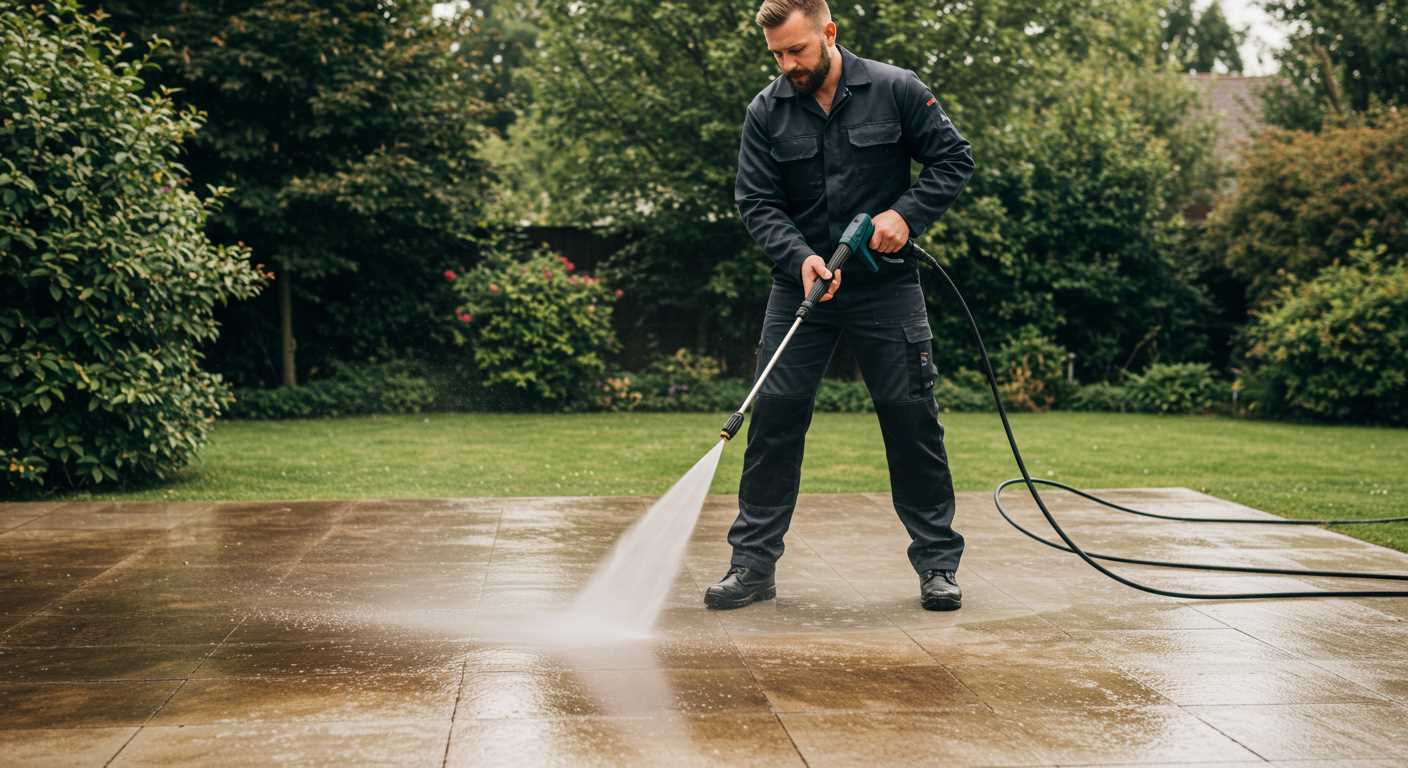



A domestic faucet may not provide sufficient flow and pressure for optimal performance of a high-pressure cleaner. Typically, these devices require a minimum flow rate of around 8 litres per minute and a pressure of at least 1.5 to 2 bar to function effectively. Depending on the specifications of your household plumbing, connecting directly to a tap can work but often leads to unsatisfactory results.
For reliable cleaning capabilities, using a dedicated water source, such as a garden hose or an outdoor spigot, is advisable. I have found that these options generally deliver the required water pressure and volume for high-performance cleaning tasks. Additionally, consider the length of your hose; using a longer hose can reduce pressure, so it’s wise to select the shortest practical length.
In situations where a connection to a typical kitchen faucet is the only option, ensure to check the faucet’s specifications. An adapter may be necessary, and it’s important to regularly monitor the connection to prevent leaks or damage that could arise from high water pressure. Prioritising compatibility and flow requirements will enhance the cleaning experience significantly.
Understanding Pressure Washer Requirements

The water supply must meet specific criteria to ensure optimal performance of the cleaning device. Firstly, the flow rate should ideally fall between 5 to 10 litres per minute. Lower flow rates may lead to inadequate cleaning efficiency, while excessively high rates can strain the machine’s components.
Next, the water pressure, typically measured in bars, should range from 1.5 to 4.5 bars for most domestic units. Insufficient pressure results in poor cleaning, whereas excessive pressure can damage surfaces and components.
Temperature plays a role too; the water should not exceed 60°C. High temperatures can lead to premature wear of seals and hoses, compromising the unit’s longevity.
For best results, a continuous supply is necessary. Intermittent flow can cause the motor to overheat. Therefore, ensure that the connection allows for a steady intake, minimising downtime and reducing stress on the equipment.
Additionally, consider the quality of water; debris and contaminants can obstruct the internal mechanisms. Installing a filter at the inlet can prevent potential issues. Maintaining cleanliness will prolong the lifespan and efficiency of the device.
| Requirement | Ideal Range |
|---|---|
| Flow Rate | 5-10 L/min |
| Water Pressure | 1.5-4.5 bars |
| Water Temperature | Up to 60°C |
In conclusion, monitoring these parameters ensures effective operation and helps maintain the unit in good working condition for years to come.
Water Flow Rate Needed for High-Pressure Cleaners
A minimum flow rate of 7 to 8 litres per minute is necessary for optimal operation. While lower flow rates may still activate the machine, they can impair performance, leading to inadequate cleaning results and potential damage.
Always ensure your source can deliver the required flow continuously. Insufficient water supply can cause overheating, which may shorten the lifespan of the equipment.
When considering models, check the specifications; reliable units typically list their minimum flow requirements. Water pressure also plays a role, so balancing both factors is key to achieving desired results.
If you experience low water availability, consider using a storage tank or an alternative water source that meets the flow criteria. Regular maintenance, such as checking hoses for kinks and ensuring connections are secure, can also enhance water delivery.
Monitoring the flow rate can significantly improve performance. A flow meter can provide insight into your water supply’s efficiency, allowing for adjustments as needed.
Ultimately, ensuring an adequate flow rate is not just a recommendation; it’s a fundamental aspect of achieving effective cleaning and maintaining the longevity of your equipment.
Compatibility of kitchen taps with wash equipment

Assessing the suitability of various kitchen spouts for activating power cleaning units is critical. Most standard household fixtures, while capable of providing ample water for general use, may not meet the higher demands of a cleaning system. It’s important to check the connection size, typically half an inch, as incompatible fittings can lead to leaks or insufficient water flow.
Regarding pressure and flow rates, fixtures designed for domestic purposes generally offer a lower output than required when utilising these high-performance devices. For optimal results, a minimum flow rate of around 8 litres per minute is typically necessary. Low-volume spouts may struggle to maintain consistent performance under strain, resulting in poor cleaning results.
Materials also matter. Brass and stainless steel connections provide better durability and resistance to corrosion, which is crucial when interfacing with intense water pressure. Always inspect hoses and connectors for any wear, as inaccuracies here can compromise the operation.
To ensure compatibility, it is advisable to consult the manufacturer’s guidelines of both the cleaning unit and the spout. Adaptors may offer solutions for mismatched connections, enhancing flexibility in use. Recognising these factors will assist in maximising the cleaning capabilities of your equipment while maintaining the integrity of your plumbing fixtures.
Potential issues with low water pressure

Using a domestic water source for high-powered cleaning devices can lead to several challenges, especially when the flow is inadequate. Here are some specific problems associated with low water flow rates:
- Inconsistent Performance: Insufficient water can result in reduced cleaning efficacy. The machine may struggle to generate the necessary jet force, making it difficult to tackle tough stains.
- Risk of Damage: Low flow might cause the equipment to overheat. Continuous operation without adequate water can lead to pump failure or component wear.
- Extended Cleaning Time: With subpar flow, removing dirt and grime takes longer. This inefficiency can be frustrating and counterproductive.
- Inability to Achieve Desired Pressure: Many models require a specific water pressure to function optimally. Insufficient pressure compromises the unit’s ability to operate correctly.
- Poor Spraying Action: Inadequate water flow impacts the spray pattern, leading to uneven coverage and inefficient cleaning results.
To mitigate these issues, I recommend considering a water source with a guaranteed minimum flow rate of at least 8 litres per minute. Checking the specifications of the cleaning appliance can provide clarity on the required water pressure and flow to maintain optimal functionality. Regular maintenance and periodic checks of plumbing fixtures will also be beneficial.
Connecting Your Pressure Cleaning Device to a Kitchen Faucet
To connect a cleaning device to a kitchen faucet, ensure you have a suitable adapter. Usually, standard kitchen faucets may not fit the specific connection type of many models, so an appropriate fitting is essential. Look for adapters designed for both garden hoses and the quick-connect type connections typically found on cleaning equipment.
Begin by turning off the faucet. Once the water supply is stopped, remove any aerators or attachments from the faucet to expose the threading. Clean any debris before attaching the adapter to ensure a secure fit. Tighten it gently but firmly without overdoing it to avoid damaging the threads.
After securing the adapter, connect the hose of your cleaning device. Make sure that the hose is tightly fitted to prevent leaks. The other end of the hose should then connect to the cleaning machine. Ensure all connections are snug, as this will prevent water loss during operation.
Once everything is connected, gradually turn on the water supply. Check for leaks at all joints and tighten as necessary. After confirming everything is secure, you may proceed with usage. Always monitor the water flow during your task to prevent overheating the machinery due to inadequate supply.
If the pressure fluctuates or the device shows signs of inefficiency, terminate use immediately and inspect the connections and the water supply. Ensuring a steady flow will maintain the performance and longevity of your equipment.
Alternative water sources for pressure washers

An effective alternative for supplying a power cleaner is using rainwater harvesting systems. These systems collect and store rainwater, making it an environmentally friendly option. Ensure the storage tank is clean and free from contaminants to avoid clogging the equipment.
An outdoor garden hose bib is suitable as another water source. It generally provides ample flow and pressure, allowing the machine to function optimally. Verify that the connection is secure and check for any leaks before commencing use.
A dedicated well can work well too, offering a consistent water supply. However, monitor the well’s output regularly to ensure that the water level remains adequate, especially during dry spells.
<p swimming pool water can also be a resource, but caution is advised due to potential chemicals in the water. Filtering or diluting the pool water may be necessary to prevent damaging any components of the device.
If none of these options are feasible, consider deploying a portable water tank equipped with a pump. This setup allows flexibility in sourcing water, especially if you’re cleaning in different locations or sites lacking a fixed supply.
FAQ:
Can I run a pressure washer using my kitchen tap?
Yes, it is possible to run a pressure washer off a kitchen tap, provided that the tap can generate sufficient water flow and pressure needed for the washer to operate effectively. Most pressure washers require a minimum water supply of around 5-7 litres per minute to function properly. It’s advisable to check the specifications of your particular pressure washer model for the exact requirements. Additionally, ensure that the connection between the tap and pressure washer is secure to prevent any leaks during use.
What should I check before using my kitchen tap with a pressure washer?
Before using your kitchen tap with a pressure washer, check a few key factors. First, ensure the tap provides adequate flow and pressure, as many pressure washers need a minimum of 5-7 litres per minute. Inspect the water supply for any potential restrictions, like kinks in hoses or debris in the tap. Secondly, confirm that the correct adapter is available to connect your pressure washer to the tap to prevent leaks. Lastly, make sure the pressure washer is compatible with the water pressure supplied by your kitchen tap.
Are there any risks in using a kitchen tap for my pressure washer?
While using a kitchen tap for your pressure washer can be convenient, there are potential risks to consider. One concern is that if the tap cannot supply enough water, it might cause overheating in the washer, leading to possible damage. Additionally, prolonged use under low water conditions can strain the pressure washer’s components. It’s also important to be cautious about how the added pressure may stress your kitchen plumbing. To mitigate these risks, always ensure that the water flow meets the minimum requirements and monitor the pressure washer’s performance during use.








